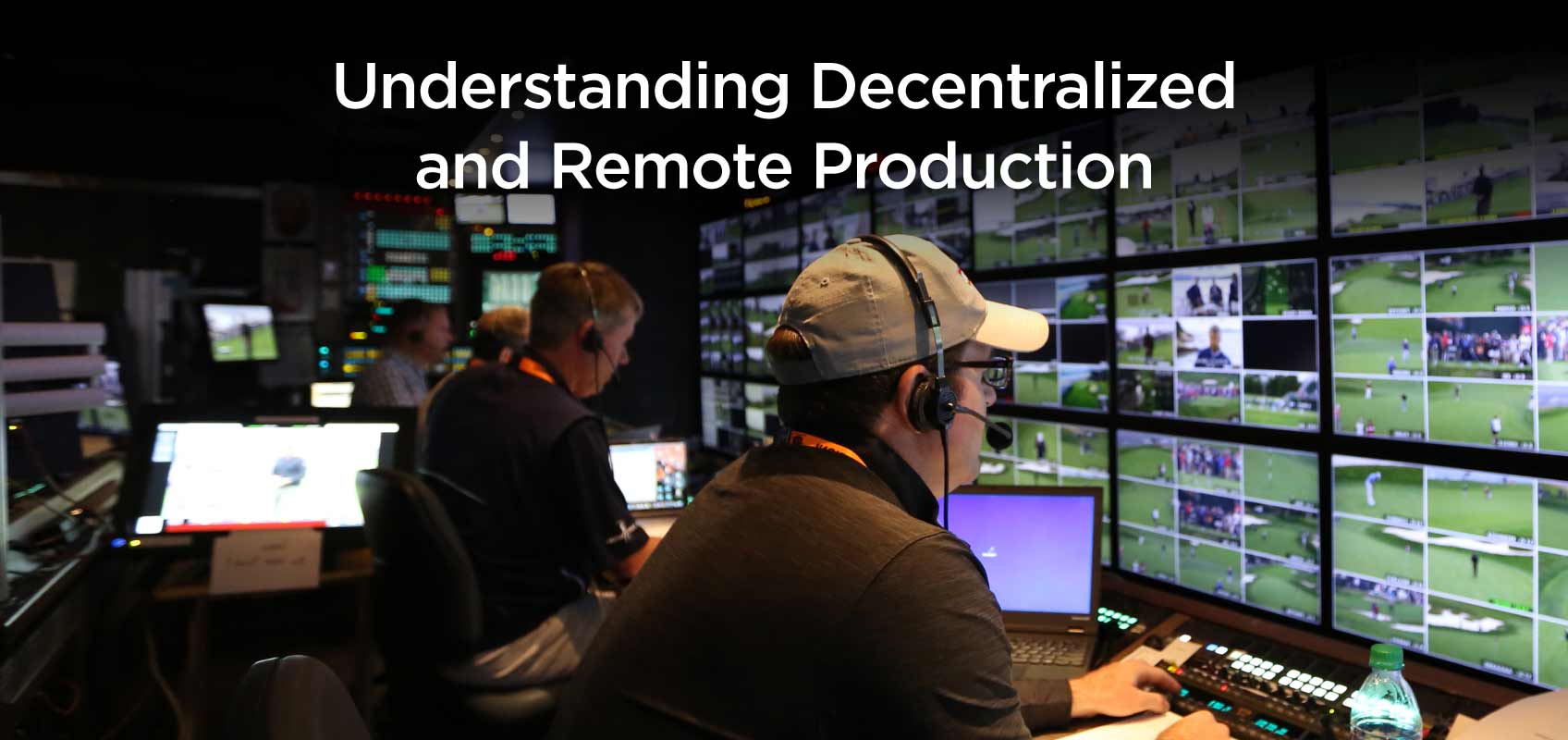The past few years have spurred great changes across the broadcast industry. With viewers thirstier than ever for sports and other types of live television content, broadcasters are looking to do more with less. The ubiquity of broadband internet now made wireless with 5G and the proven reliability of low latency video streaming technology, especially with the SRT protocol, is enabling broadcasters to cover and deliver more live content without the need for large outside broadcast operations and satellite links. Once revolutionary new concepts, REMI and remote production workflows are increasingly becoming the normal way of covering live events.
In this post we’ll look at what decentralized and remote production are, the benefits of adopting these kinds of workflows, and how broadcasters are leveraging today’s technologies to produce and deliver high quality content to their viewers.
At-home, At Home
The original REMI and at-home live broadcast production models were designed in order to send less personnel and equipment to the field and instead concentrate talent and production resources at a central location. Although the field contribution component is ever more relevant, centralized production is now posing its own challenges as more production staff and on-screen talent remain at home.
IP video streaming combined with software-defined and cloud-based video production tools has enabled broadcast professionals to continue to do their job no matter where they are. IP video streams can be used for all types of live production workflows including broadcast contribution, return feeds, bi-directional interviews, and broadcast monitoring. As a result, production facilities around the world are being decentralized.
Apart from health and safety concerns, decentralized production also enables broadcasters to recruit the very best talent for their productions no matter where they are located. In addition, decentralization is allowing broadcasters and content owners to partner with other companies who may be specialized in different workflow aspects including graphics, playout, replay, localization, social media, and OTT delivery. Decentralized remote production is having an impact not just on broadcasters, but on the entire live television eco-system.
Decentralization, enabled by the flexibility of IP video streaming, is further increasing the power and flexibility of remote production workflows. Though the initial driver for this change was the COVID-19 pandemic, the benefits of decentralized production go far beyond, and, as recent success stories indicate, it’s here to stay.

5G Could be a Game Changer for Remote Production
Mobile networks have become more reliable and powerful with each upgrade, so it’s no wonder that 5G technology is a game changer for remote production. 5G offers television broadcasters more capacity, lower latency, and better coverage than 4G, making it ideal for mobile broadcast contribution, especially for live sports. During the 2021 Summer Games, 5G technology was leveraged for live video production during both the opening and closing ceremonies, as well as during some of the events.
Tried, Tested, and Proven
Though the trend is recent, decentralized production has already been proven to work. In 2020, the NFL relied on SRT and Haivision streaming technology to pull off a virtual draft, watched by 55 million viewers, with players and talent contributing from home.
Fox Sports also succeeded in bringing NASCAR and MLB back to TV while keeping many of their production team at-home during the pandemic. Haivision Makito encoders, decoders, and an SRT Gateway were used for real-time collaboration between multiple production facilities, home-based producers, and executives.
With a large proportion of broadcast engineers and producers working from home and perhaps continuing to do so for years to come, as well as the drive towards distributed production workflows across multiple facilities, remote production will continue to innovate ways that content is produced and delivered.

